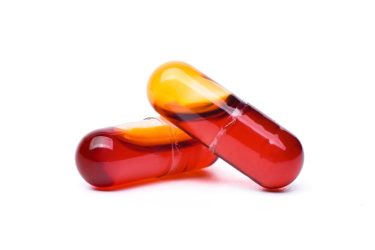Dissolution of capsule with cross-linking
Posted: 9 May 2024 | Jigar Shah (Baroque Pharmaceuticals) | No comments yet
In this article, Jigar Shah, Senior Group Leader in Analytical Development at Baroque Pharmaceuticals, explores the intricacies of capsule dissolution testing.


What is dissolution?
Dissolution tests determine the rate and extent of release of the drug substance from a drug product under specific conditions and specific times. Dissolution tests help to evaluate bioavailability of drug substances and are part of release criteria during quality control testing. Dissolution tests are also undertaken during product development to study batch-to-batch consistency, evaluate stability of the product and to assure compliance with regulations. The regulatory agencies use the dissolution test to provide a quality connection from a pivotal bio batch to the commercialised product.1
For this reason, the dissolution test development and validation are critical factors in ensuring that the test is robust and clinically relevant.
Dissolution of capsule formulation
As is the case with other oral solid dosage forms, USP Apparatus 1 (basket), USP Apparatus 2 (paddles), USP Apparatus 3 (reciprocating cylinder), and USP Apparatus 4 (flow-through cell) are most often chosen as the dissolution apparatus for capsules.
Generally, basket or paddle with/without sinkers are preferred for capsules.
However, several specific benefits and drawbacks must be considered in selecting and using the dissolution apparatus for capsules:
- Capsules may be filled with a material that has a specific gravity less than that of water, meaning the capsules may float in an aqueous dissolution medium
- Instead of dissolving completely during the dissolution test, the capsule shell may soften and disintegrate into a sticky or waxy mass that can adhere to any point in the dissolution vessel and in different areas in different vessels, generating high variability in the results
- The capsule fill material may form a film on the surface of the dissolution medium during the course of the test.
Capsules can be classified as two main types based on the physical characteristics of the shell: soft capsules (softgels) and hard capsules (hardgels).
Both softgels and hardgels are composed of a polymer, eg, gelatine, starch, or a cellulose derivative such as hypromellose (HPMC) or other polymers, a plasticiser and water.2
Gelatine properties


Hard gelatine capsule example
Gelatine capsules are a widely used dosage form, both for pharmaceutical drug products as well as dietary supplements.
Gelatine is obtained from the partial hydrolysis of collagen. The most abundant animal protein in nature, collagen is an insoluble, highly ordered fibrous protein that is the primary fibrous component of bone, skin and connective tissue.
Gelatine capsule shells are prepared from a molten gel mass that is composed of gelatine and a plasticiser dissolved in an aqueous vehicle.
For hard gelatine capsule (hardgel) shells, water acts as both the plasticiser and the vehicle.
For soft gelatine capsule (softgel) shells, small polyhydroxy compounds such as glycerol, sorbitol and maltitol are typically used as plasticisers.


Soft gelatine capsule example
Several issues affect the development of a dissolution procedure and the dissolution behaviour for capsules, including:
- Properties of capsule shell material
- Properties of the fill material
- Interaction between capsule shell material and fill material.
The capsule dissolution process involves three stages:
- Rupture of the capsule shell
- Release and dispersion of the capsule fill material
- Dissolution of the active ingredient in the medium.
Rupture of the capsule shell is necessary for release of filled materials and dissolution of active ingredient, however, due to cross-linking of capsule shell (containing gelatine) this will not occur.2
What is cross-linking?
Cross-linking involves covalent bonding of the amine group of a lysine side chain of one gelatine molecule to a similar amine group on another molecule. The covalent bonding is irreversible”
Gelatine in the presence of certain compounds, mainly aldehydes, or in high humidity and high temperature conditions can cross-link.
Cross-linking involves covalent bonding of the amine group of a lysine side chain of one gelatine molecule to a similar amine group on another molecule. The covalent bonding is irreversible.
Cross-linking can be caused by agents present in the capsule fill that react with gelatine molecules, resulting in the formation of a pellicle (a thin, water insoluble skin) on the internal surface of the shell. Less often, a pellicle may form on the external surface of the shell, arising from reactive agents present in, or derived from, the intermediate or final packaging components.
Such pellicle formation on the internal or external surface of the gelatine capsule shell prevents the capsule fill from being released during dissolution.
A weaker type of cross-linking involves complexation of free carboxylic acid groups from two different gelatine molecules with trivalent metal ions such as Fe3+ and Al3+. These cations can be found in some of the dyes used as colourants or as low-level contaminants of excipients.2
Common causes of cross-linking include:
- Aldehydes present in active pharmaceutical ingredients, excipients, packaging materials, or degradants formed in situ during storage
- High humidity and high temperature
- Substances that facilitate a cross-linking reaction – reducing sugar
- Substances that promote decomposition of stabiliser in corn starch (hexamethylenetetramine) resulting in the formation of ammonia and formaldehyde
- Rayon coilers that contain an aldehyde functional group (furfural)
- Polyethylene glycols that may auto-oxidise to form aldehydes
- UV light, especially in the presence of high heat and humidity.2
Dissolution of cross-linked capsules
In vitro dissolution testing of cross-linked capsules can result in slower release of the drug, variability in release or no release at all.
The US Pharmacopeia therefore allows the use of enzymes in the dissolution medium and requires tier two dissolution testing if the gelatine capsule fails dissolution test due to evidence of cross-linking.
The degree of cross-linking is not uniform within one capsule or among different capsules. Consequently, dissolution results will have higher variability when gelatine capsules are cross-linked.
The dissolution failure by cross-linking should be properly documented and justified.
Cross-linking in the gelatine can be evidenced by (a) visual observation of the presence of a thin membrane around the capsule or the capsule being transformed into a gelatinous mass with no rupture (b) Spectroscopic techniques such as carbon 13-nuclear magnetic resonance, Fourier transform near-infrared, Fourier transform infrared.2
Enzymes will digest the pellicle, remove the cross-linking and release the drug from inside the shell.
Tier two concept
Use of enzymes based on pH of QC release dissolution media is the better solution for cross-linking.
Enzymes are used for removing cross-linking in two ways: one way is with simple physiological buffer media and another is using a medium with surfactant.
Use of enzymes: Tier two concept – option 1
Tier two dissolution testing is included in the USP Chapter <711> with details of the cross-linking issue.1
USP general chapter <1094> Capsule-Dissolution Testing and Related Quality Attributes has described capsule cross-linking in depth.2
Use of enzymes depends on the pH of the dissolution media, for example:
Dissolution medium with pH ≤4.0
A quantity of pepsin that results in an activity of not more than 750,000 units/L of dissolution medium is used.
Dissolution medium with pH >4.0 and <6.8
A quantity of papain that results in an activity of not more than 550,000 units/L of dissolution medium or a quantity of bromelain that results in an activity of not more than 30 gelatine-digesting units (GDU)/L of dissolution medium are used.
Dissolution medium with pH ≥6.8
A quantity of pancreatin that results in a protease activity of not more than 2,000 units/L of dissolution medium is used.
Tests to be carried out to ensure that selected enzymes do not adversely interact with formulation.
There are several challenges associated with this option, including:
- Selection of enzyme, optimisation of enzyme concentration, the need for a filter interference study, and issues related to precision, recovery, linearity and solution stability
- Verification that Tier 2 dissolution does not affect the dissolution profile when compared with Tier 1 test
- Qualifying / setting chromatography.3
Use of enzymes: Tier two concept – Option 2
If the dissolution medium contains surfactant or other ingredients that are known to denature the used enzyme activity, a pre-treatment step in the dissolution testing of the dosage form may be applied.
This pre-treatment consists of adding the enzyme to the specified medium without the surfactant and running the agitation for a contact/incubation time, in most cases not more than 15 minutes.
After this period, a solution containing the surfactant is added to the dissolution vessel in such a way that the final concentration of the surfactant in the vessel will be the same as the QC release media.1
The pre-treatment time is included in the total run time of the dissolution method.
Challenges associated with this option are the same as for Option 1. However, there are additional factors to consider including the optimum composition and volume required for pre-treatment, as well as optimisation of contact time.3
Conclusion
Cross-linking is the major issue in dissolution testing for gelatine capsules. Sometimes a batch fails its stability study due to cross-linking. In this instance, enzymes are the best option for achieving Q point release as per specification. This Tier 2 activity is used for gelatine capsule shells used for hard and soft gelatine capsules, as well as gelatine-coated tablet dissolution queries.
In Tier 2 option, enzymes are used as per the pH of respective QC media with proper optimisation. In Option 1, it is easy to explain media composition and procedure while for Option 2, it is difficult to explain. Pre- treatment step and incubation time should be optimised with caution and finalised. Using Tier 2 Option 1 and 2, we can save dissolution and ultimately, by regulatory justification with efficient data, file the product.4
Jigar spoke at EPR’s 2023 ‘The Future of Bio/Pharmaceutical Analysis’ online summit. Our 2024 is open for registration. Book tickets here!
About the author


References
- USP General Chapter <711> Dissolution
- USP General Chapter <1092> The Dissolution Procedure: Development and Validation
- USP General Chapter <1094> Capsule-Dissolution Testing and Related Quality Attributes
- The Future of Bio Pharmaceutical Analysis 2023 [Internet]. Pharmaceutical Events. [cited 2024 Apr 23]. Available from: https://pharmaceutical.events/the-future-of-bio-pharmaceutical-analysis-2023/









